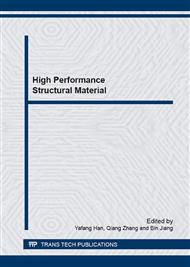p.562
p.567
p.572
p.578
p.581
p.586
p.594
p.601
p.608
Effect of Heat Treatment on Microstructure and High Temperature Wear Properties of High Boron Medium Carbon Alloy
Abstract:
The microstructures and 500 °C high temperature wear properties of a high boron medium carbon alloy (HBMCA) quenched at 950 °C and then tempered at 500 °C were investigated, compared with a typical high speed steel (HSS). The results showed that the matrix structure of HBMCA after heat treatment was tempered sorbite. The content of herringbone-like and rodlike eutectic decreased. Hard phase precipitation (boron carbon compounds, e.g.M23 (C, B) 6, MB and M3B2) increased in the matrix. And the abrasion resistance of HBMCA after heat treatment at high temperature was 2.39 times of a typical HSS for roller. The wear mechanism of HSS at high temperature is a typical oxide fatigue wear mechanism, while as-quenched HBMCA is oxidation, adhesive wear mechanism.
Info:
Periodical:
Pages:
581-585
Citation:
Online since:
April 2015
Authors:
Price:
Сopyright:
© 2015 Trans Tech Publications Ltd. All Rights Reserved
Share:
Citation:


